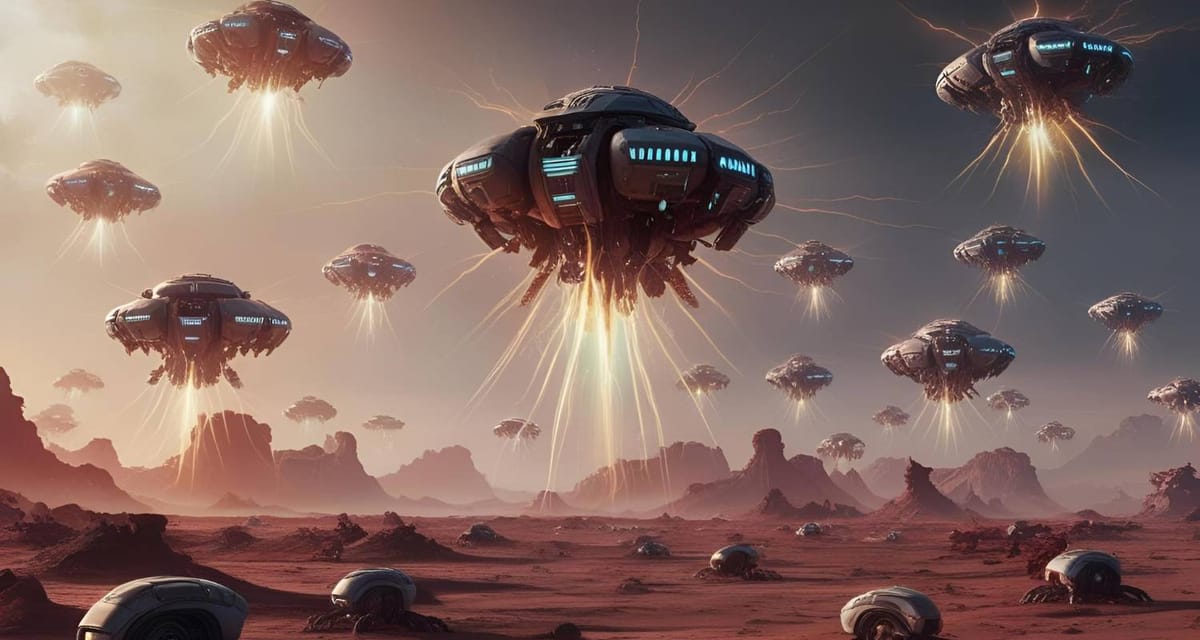What Are Agent Swarms in AI?
Explained for AI Builders, Researchers, and the Curious.

Agent swarms are a serious architectural shift in how founders think about building and deploying AI systems. If you’ve seen chatter about “multi-agent systems,” “AI swarms,” or “agent collectives,” here’s what’s actually going on and why it matters.
Agent Swarms, Defined
At their core, agent swarms are collections of autonomous AI agents that work together. This can be done either loosely or with tight coordination to complete tasks.
Think of them like digital ants: each agent might be relatively simple on its own, but together, they can handle surprisingly complex problems.
In this architecture:
- Each agent has a specific role or skill (ex: researching, planning, coding, negotiating).
- Agents communicate, share memory, and sometimes vote or compete for the best plan.
- Coordination can be scripted, learned, or emergent.
This a shift away from monolithic LLM “do-everything” agents toward specialized, modular AI teams.
Real-World Examples
Some notable agent swarm-style systems and startups:
- Autogen from Microsoft – A framework for building multi-agent chat systems with memory and coordination.
- CrewAI, Superagent, and Camel-AI – Open-source frameworks for spawning swarms of agents with different personalities or objectives.
- OpenAgents (by DeepMind) – Experimental agent collectives for solving decision tasks.
- Yutori – Startup raising millions to build personal AI agents that collaborate and delegate tasks.
- Swarm Network – Seed-stage startup creating decentralized AI agent networks for coordination at scale.
Why Agent Swarms Are Gaining Traction
The shift to agent swarms isn’t just hype—it’s driven by real technical bottlenecks:
| Challenge | Why Swarms Help |
|---|---|
| LLMs struggle with long tasks | Break work into subtasks, assign agents |
| Lack of persistent memory | Shared “swarm memory” stores context |
| Poor tool integration | Specialized agents can control tools independently |
| Fragile autonomy | Swarms can recover from individual agent failures |
Agent Swarms vs. Multi-Agent Systems
This isn’t an entirely new idea—multi-agent systems have been studied for decades. What’s different now?
- LLM-powered agents can use natural language to reason, communicate, and coordinate.
- Cloud-native tooling makes it easier to spin up, monitor, and evolve agent teams.
- APIs and frameworks like LangChain, AutoGPT, and CrewAI lower the barrier to entry.
In short: the tech stack finally caught up to the theory.
Risks and Open Questions
While promising, agent swarms raise important challenges:
- Coordination complexity: How do we keep swarms from spiraling into chaos?
- Security: If agents talk to each other—and the internet—what’s stopping prompt injection or collusion?
- Ethics: Do swarms make AI more opaque and harder to audit?
- Compute cost: Running dozens of agents = $$$, unless optimized.
Researchers are experimenting with decentralized control, voting systems, and even emergent behavior as ways to balance power within swarms.
The Future: AI Societies?
Some researchers believe agent swarms are a step toward “AI societies”:
- Autonomous systems that negotiate, trade, and evolve.
- Each agent is a digital worker in a programmable economy.
- Governance and alignment challenges that mirror human systems.
It’s early, but the direction is clear: the age of solo-AI agents gives way to collaborative, dynamic collectives.
Related Reading
Final Thoughts
Agent swarms might just be the next paradigm in AI. Whether you’re building agents, deploying automation, or researching AI governance, keeping an eye on these emerging collectives could be a glimpse into the future.



